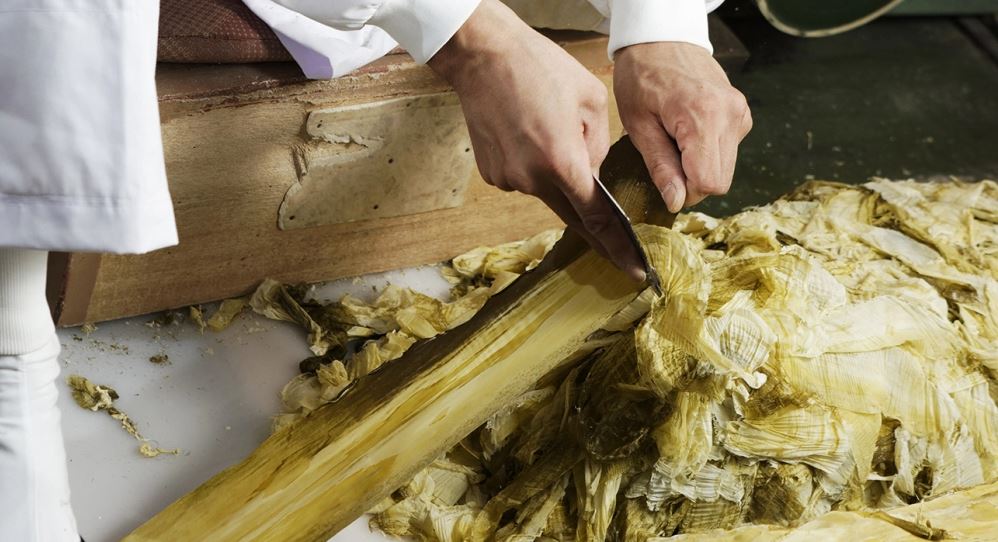
Image: Gōda Shōten
Oboro Kombu - The Art of Shaved Seaweed
- 9 December 2021
- 12:00 - 13:00 (GMT)
- Online
- https://www.japanhouselondon.uk/whats-on/2021/oboro-kombu-the-art-of-shaved-seaweed-with-sakai-craftsmen-goda-mitsunobu-and-hasegawa-yu/
- info@japanhouselondon.uk
- Tweet
The city of Sakai in Ōsaka Prefecture is not only home to some of Japan’s sharpest knives, but also to a rich food culture that has developed as the result of flourishing trade over the centuries.
Kombu, edible kelp (a type of seaweed), is used in a lot of Japanese cuisine and is the basis of the seasoning in various dishes; harvested in Hokkaidō, the northernmost of the main islands of Japan, kombu was historically brought to Sakai via ship through a route known as the ‘Kombu Road’.
For the fourth and last event of the online series in partnership with Sakai City Industrial Promotion Center, Japan House London explores the world of kombu and the processing techniques in Sakai which rely on their skilled craftspeople’s ability to manually shave oboro kombu (shaven kelp) into paper-thin slivers with a thickness of less than 0.05 mm.
During this event, guests are introduced to Gōda Shōten, a processing workshop in Sakai that has been shaving kombu manually for 75 years. Following an introduction of the historical background of the kombu processing industry in Sakai by Gōda Mitsunobu, current president of Gōda Shōten, master craftsman Hasegawa Yū presents a live demonstration of how oboro kombu is hand-shaven with Sakai’s sharp blades to preserve its perfect texture and qualities.
During this live online event, moderated by Japan House London Programming Director Simon Wright, there is an opportunity for registered guests to ask questions to both presenters.
About the speakers
Gōda Mitsunobu is the third president of Gōda Shōten, a workshop processing oboro kombu in Sakai City. Since its founding in 1946, Gōda Shōten has been making kelp products hand-processed by skilled craftsmen for three generations.
Hasegawa Yū is a craftsman who has been making handmade oboro kombu for 15 years since he joined Gōda Shōten in 2006. He strives to produce something that pleases their customers.
